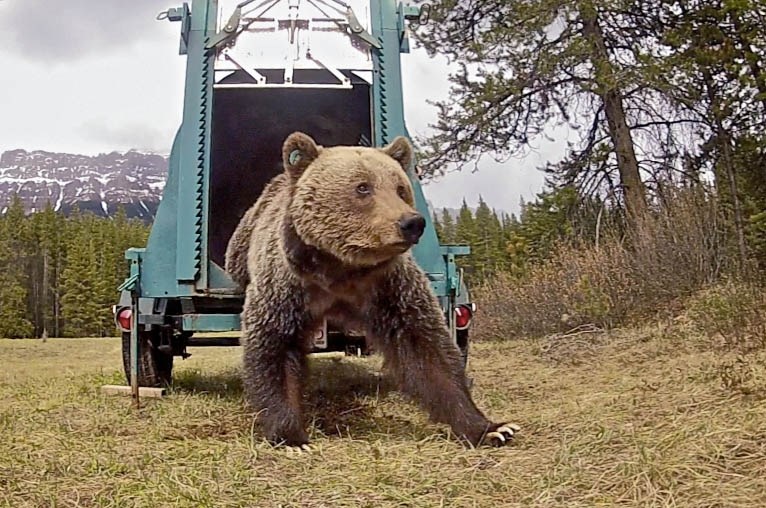The fate of a famous mamma bear in Lake Louise is unknown.
Bear 72, a 22-year-old female grizzly bear and the so-called matriarch of the Lake Louise area, did not show up this spring, leading to suspicions she may have died of old age.
Officials say bear No. 72 has been a valuable reproductive female grizzly, was tolerant of people and found a niche in the habitat surrounding Lake Louise where she raised successive litters of young.
Jesse Whittington, a Parks Canada conservation biologist for Banff National Park, said bear 72’s last GPS collar location was in the far reaches of Chickadee Valley in Kootenay National Park in October 2014.
“We’re trying to figure out what has happened. We’ll go in and investigate if her collar fell off or if she has died,” Whittington said. “It’s neat to see some of these bears live a long time.”
Bear number 72 was initially collared as part of the 1994-2004 Eastern Slopes Grizzly Bear Project, a landmark study that addressed the urgent need for scientific information about the effects of human development and activities on grizzly bears in the Bow River watershed.
She was captured in 2001, and at the time, researchers estimated she was born around 1993. She was later collared again in 2005 by Parks Canada after the ESGBP had wrapped up, and Parks has been keeping tabs on her ever since.
Colleen Campbell came to know bear 72 well, because she monitored her for three years as part of the ESGBP.
“If she was a person, you would say she had a really nice personality. She was always easy going,” she said. “She’s just a good bear, a really a good bear.”
Campbell said 72 had a home range laced with popular trail systems and she developed a tolerance towards people.
“She held her ground, not in any defensive way, but it was her turf and she was going to use it,” she said. “I wish we had more bears like that and more people who understood that we have to leave them alone.”
It is believed bear 72 had at least three litters of cubs, possibly four. The first litter of cubs was believed to be in 2002 when she was nine years old, though it is possible she produced cubs before that.
One of 72’s famous offspring was male bear No. 8. He developed a lengthy rap sheet of coming too close to people and facilities, including bluff-charging people and vehicles.
Park managers were forced to destroy him in 2011 after a series of aggressive encounters with people over the course of that summer. He was six years old.
The final nail in the coffin for bear No. 8 was when he stalked famed mountaineer Barry Blanchard and a client near Saddleback Pass in September 2011.
When it became apparent the grizzly was stalking them, Blanchard and his client climbed to the top of a tree to escape. Bear No. 8 climbed the tree after them, coming within mere metres. After the three-hour ordeal, the bear eventually took off into the forest.
Bear 72’s most recent offspring currently make their home in the Lake Louise region. Her two female sub-adult daughters are now five-and-a-half-years-old and are known as bears 142 and 143.
Bear 142 was fitted with a GPS collar this spring as part of the Parks Canada-Canadian Pacific Railway joint action to investigate ways to prevent ongoing bear deaths on the train tracks.
In May, Parks Canada issued a warning for the Lake Louise area as bear 142 was searching for early season food in the valley bottom and was exhibiting curious and bold behavior around people.
“She’s been a good producer,” said Campbell.
Bear 72’s home range has been extensive, including areas immediately near Lake Louise such as the Lake Louise ski area. She has also spent a lot of time travelling Moraine Lake, Consolation Lake, Eiffel Valley, Larch Valley, Paradise Valley and Panorama Ridge.
Campbell said the teeth of bears wear down over time, and they are unable to take in nutrition as well any more.
“It just gets harder for them,” she said. “It probably just got harder for her.”




